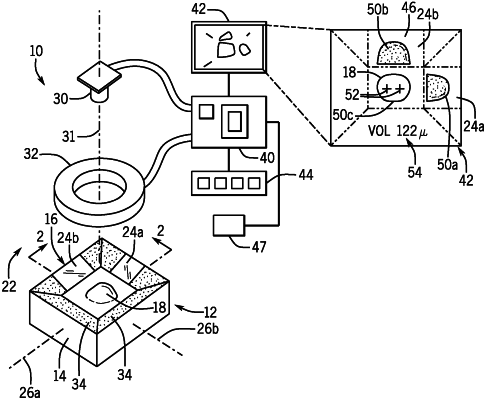| CPC A61B 5/06 (2013.01) [A61B 5/0079 (2013.01); A61B 5/742 (2013.01); A61B 90/06 (2016.02); A61B 90/36 (2016.02); A61B 2090/063 (2016.02); A61B 2090/363 (2016.02); A61B 2503/40 (2013.01)] | 20 Claims |

|
1. An apparatus for measuring a volume of a lesion comprising:
a housing providing a lower surface adapted to be positioned and supported at a surface of skin around the lesion with the lesion extending upwardly through a center opening in the lower surface; the lower surface defining a plane of contact;
a camera directed toward the center opening along a camera axis, the camera held by the housing at a predetermined distance from the lower surface;
a first mirror attached to the housing and held at a first angle by the housing;
a second mirror attached to the housing and held at a second angle by the housing; and
a computer executing a program stored in non-transitory memory to receive an image from the camera of side views from the first mirror and second mirror to compute the volume of the lesion;
wherein the first angle and the second angle are such as to direct light received from the lesion and parallel to the plane of contact, to the camera for imaging by the camera;
wherein the image by the camera through the first mirror and the second mirror excludes portions of the lesion below the surface of the skin; and
wherein the computer is configured to compute the volume of the lesion limited to a volume above the skin.
|